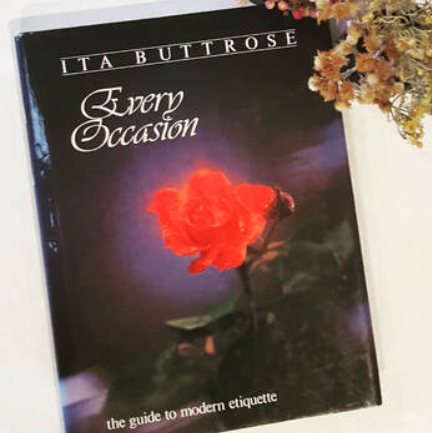|
Afternoon tea at the grand Hotel Windsor is certainly a grand experience. Welcomed past the warm sun-soaked stone façade and the pretty window boxes of red geraniums into the charming reception of this five-star Victorian-era hotel, one of Australia’s finest, we were ushered through to the luminous room hosting the afternoon tea whose large windows offered views over Spring Street to the stately Parliament House. Seated at one of the finely dressed round tables where we were again welcomed, our afternoon of indulgence commenced. A 19th century practice imported from England to Australia, afternoon teas are a celebration of high-quality reinterpretations of the basics – tea, finger sandwiches, sweet and savoury tarts, and a selection of deserts. Windsor Hotel – or The Windsor, as it currently calls itself – has been the place in Melbourne to experience afternoon tea for over 130 years. How It Started Served by the highly attentive staff with a fine attention to detail, our experience unrolled as smoothly as the gentle apple notes of the French sparkling wine gave way to a rounded wood finish and we worked our way through each tier elegantly sitting on Noritake plateware. We were presented with petite savoury pastries on the upper tier: Cornish pasties and confit onion tart. The balance of organic vegetables in the Cornish pasties were encased in utterly buttery pastry that reflected the season’s change to autumn. The slow-cooked caremelised onions were a perfect match with the goat’s milk cheese and orange reduction, served with a half-slice of cherry tomato for an acid bite and visual appeal. The Three Tiers of an Afternoon Tea The lower tier presented ribbon sandwiches with a distinct English touch with a nod to Asia: the salmon sandwiches with dill, mayonnaise and gherkin were served in a milk bun reminiscent of Hokkaido. Roasted walnuts give a delightful textural crunch to the sandwich containing tender roast chicken with celery. Finally, the traditional egg with mayonnaise ribbon sandwich hit a new high with a daring dash of horseradish. The middle tier we kept for last to finish on a sweet note. The three desserts were simply too beautiful to eat, but we did anyway, to our delight. The shining sphere of almond sponge and basil mousse covered in strawberry lacquer was a triumph. Caroline and Stéphanie Tatin would have approved of the apple tarte tatin whose walnut sablé crumbled delicately in the mouth, the perfect foil for the apples and classic vanilla cream. The buckwheat and dark chocolate tart gave us a taste both of Bretagne in the west of France and South-East Asia, the former through the buckwheat sablé and the latter through the tart gelée of the kalamansi citrus fruit, joined by a delectable dollop of 65% dark chocolate cremeux. It’s All In The Tea Of course, the afternoon tea wouldn’t be an afternoon tea without the tea! Our server helped us to choose teas that would most suit our preferences, giving information that supplemented the brief descriptions given in the tea menu. The aromatic tea, after being brewed at the correct temperature, was served into porcelain cups. For those who had room, the scones – plain or with plump sultanas – were just as they should be: buttery with a giving crumb, light and well-risen. They were served with the hotel’s eponymous jam and thick clotted cream. Conclusion There are many hotels and restaurants around the world who offer afternoon teas. However, to succeed, the venue needs to strike the right balance between ambiance, food and beverage quality and service standards. Whether staying in the hotel or not, the staff answered all questions in a friendly manner and served the afternoon tea in an unobtrusive way. The delicious food showed originality and the teas utmost care in their sourcing and serving. The Windsor’s building itself has stood the test of time – and whose guests have included several Australian Prime Ministers, Don Bradman, Claudette Colbert, Margaret Thatcher, Gregory Peck and Meryl Streep, among others, and provided an unparalleled cadre in which to enjoy the city’s best afternoon tea.
1 Comment
When teaching etiquette to students, I always endeavour to introduce the old idea that etiquette is a kindness and respect that is valuable. It also shows that respect knows no bounds. I like to give students a background of the European origins of etiquette. However, I do get asked about Australian Etiquette. Is there such a thing? Yes, there is! Etiquette has changed in Australia over the years. It was introduced when English gentry settled here in the country’s colonial infancy. Essentially, etiquette, like new laws, relationships, and services that underwrote the changes to its environment, economy and society, was re-written from the birth of Australia. My Very Australian Etiquette Discovery After teaching a student etiquette in the Melbourne CBD, I decided to take a walk to the State Library of Victoria, where I found an interesting read, A Guide to Australian Etiquette by Lillian M. Pyke (Lillian Maxwell), published in Melbourne at the turn of the century, and then re-published through to the war years. Her use of archaic English wording was replaced with modern English for the newer generations. Her book entailed subjects as how to perform introductions and topics of conversation to how to dress and manage matters of hygiene. Polite society valued etiquette’s worth and adjusted its mindset toward that. Emphasis was put on social graces and dining behaviour. Being well-dressed was a must. The 1920’s based period drama series Miss Fisher Murder Mysteries and the 1950’s based Doctor Blake Mysteries, use forms of British etiquette in speech and comportment, which were still in use in Australia to a great extent. Etiquette in Modern Times In 1985, Ita Buttrose published “A Guide to Australian Etiquette“ detailing what she perceived to be correct comportment for modern Australia. Ms. Buttrose discusses diverse subjects such as de-escalating ‘trolley-rage’ at a store, or what to expect and experience in a mosque. In a nod to our outdoor lifestyle, she showed great concern about bare feet and having armpits on display. During an ABC radio interview with Richard Aedy, Ms. Buttrose, herself described Australian society as having changed over time to become “an informal society,” However, the “fundamentals of how we treat each other, really, have never changed over the years.” Ms. Buttrose went onto say that manners “are a sign of a civilised society” that “make the world a much nicer place to be.” I agree with Ms. Buttrose wholeheartedly. Etiquette almost became a lost art form after the 1960s. In the last few years, it has been making a comeback. New schools throughout Australia are being established to teach the finer subjects of etiquette, such as dining, afternoon tea and social etiquette in the form of workshops and courses. Parents are enrolling their children during school holidays in group classes to learn how to introduce themselves, use the correct cutlery, and how to navigate social media. According to Seniors.com.au, “Manners and social practices help to shape a respectable society and are instilled in us from a very early age. Lack of standardised societal rules could mean a very different Australia... In today’s endlessly changing society the goal posts of ‘expected social behaviour’ also continue to change.” Etiquette is a life-changing skill; a precious possession that lasts a life-time. Understanding and learning the complete skill set of manners needed for seamlessly blending into modern Australian life, can only help one succeed and flourish in this multi-cultural and multi-dimensional land. Books on Australian Etiquette:
Article Published: Etiquipedia.blogspot.com |
AuthorElizabeth Soos Archives
August 2025
Categories |
|
CONTACT US Submit Your Enquiry |





 RSS Feed
RSS Feed

